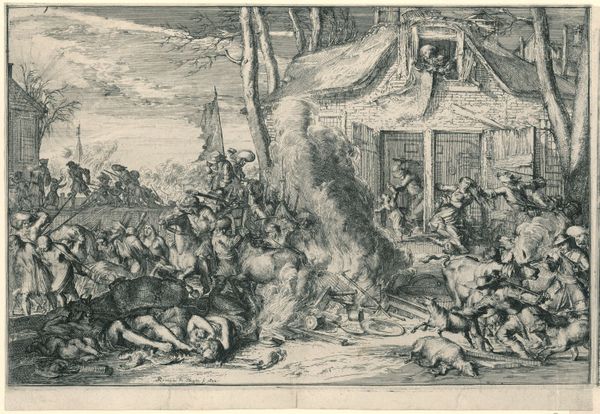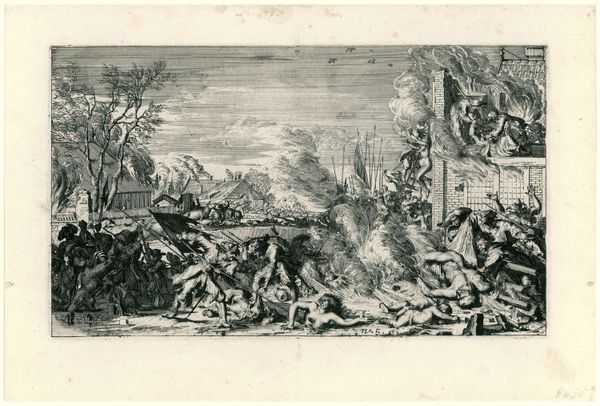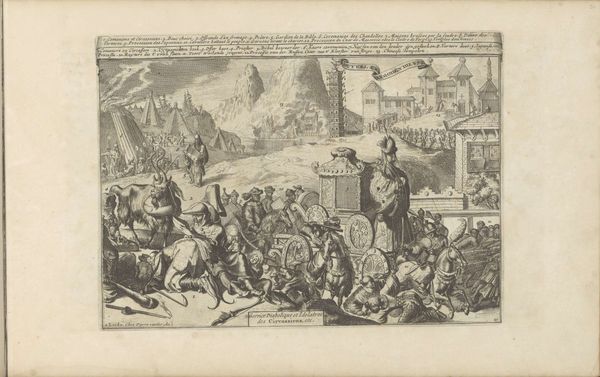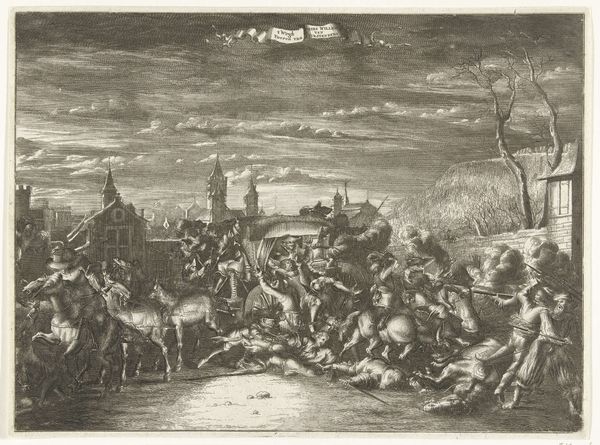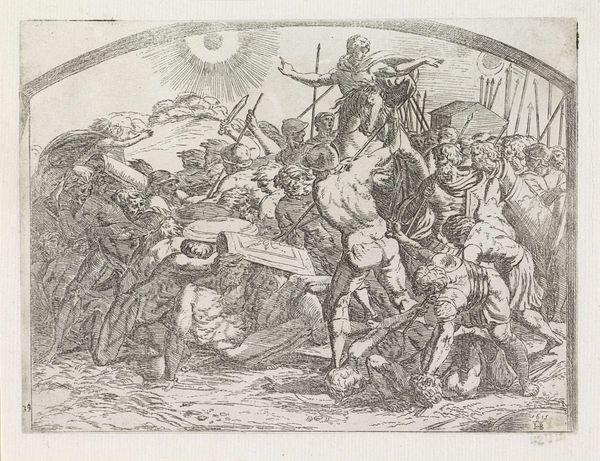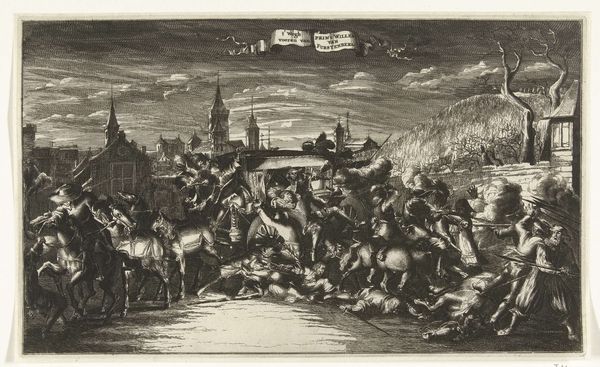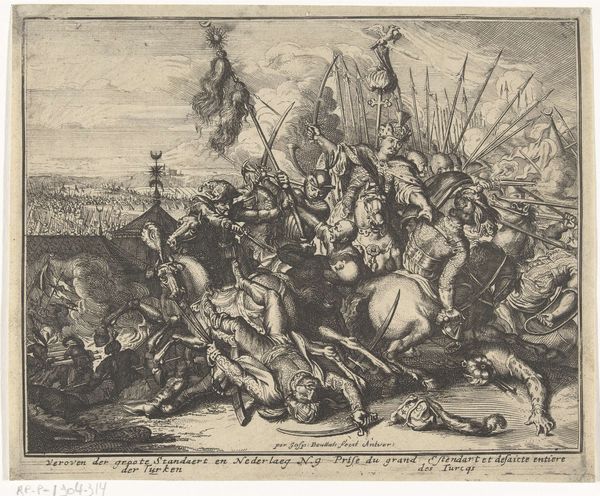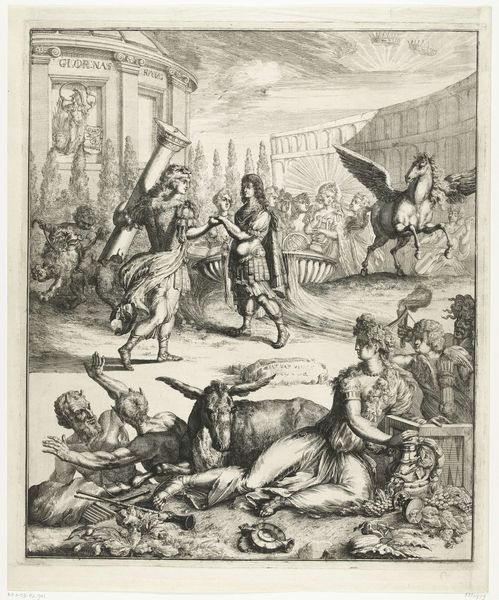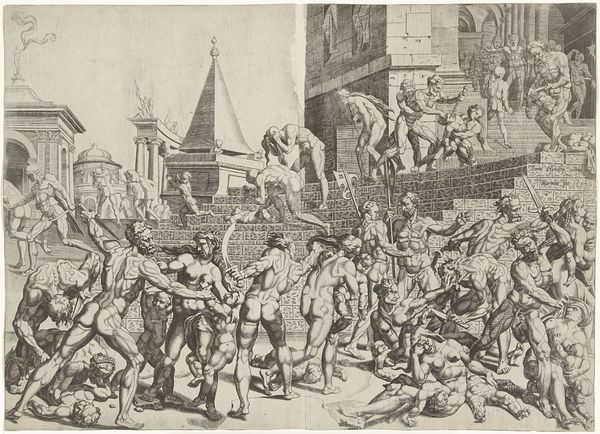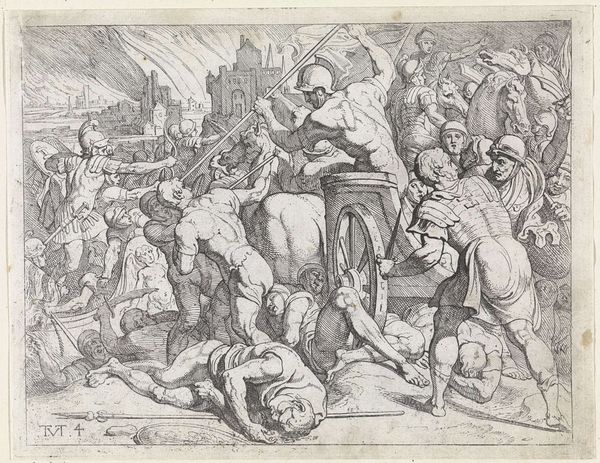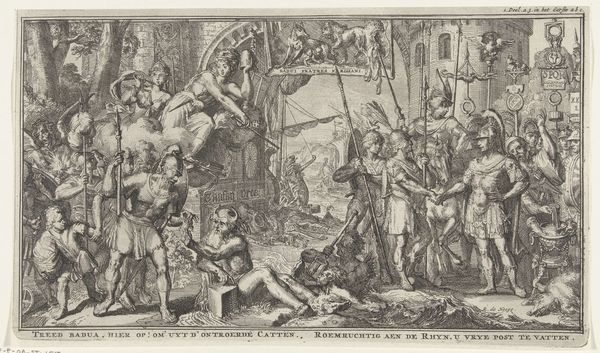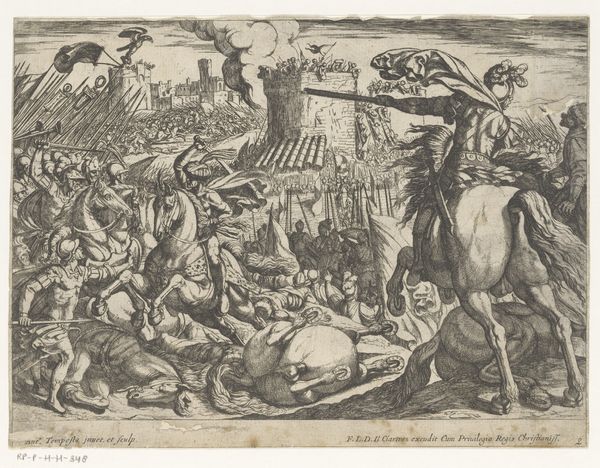
print, engraving
#
narrative-art
#
baroque
# print
#
landscape
#
genre-painting
#
history-painting
#
engraving
Dimensions: height 237 mm, width 350 mm
Copyright: Rijks Museum: Open Domain
Editor: This engraving, "Franse wreedheden in een dorp, 1672," created anonymously between 1673 and 1677, depicts a brutal scene. What strikes me is the chaos and the sense of utter despair it conveys. How do you interpret this work? Curator: It feels almost cinematic, doesn't it? Like a freeze-frame from some brutal historical drama. Notice how the artist, though anonymous, captures the horror, but also perhaps…a warning. The burning buildings, the fallen figures—it's a tableau of devastation, yes, but also a visual accusation. The 'Franse wreedheden' title leaves little to the imagination, serving as both descriptor and condemnation. I wonder what the intended audience reaction would be. Horror? Outrage? Acceptance? What do you suppose? Editor: Definitely outrage, I would think. It’s hard to imagine viewing this without feeling a sense of injustice and a call to action, however symbolic. The detail in the engraving really brings the suffering to life. Curator: Exactly. The artist, with incredible skill, uses light and shadow to guide our eye through the violence. Are those dogs fleeing from the carnage, or actively participating in the atrocities? A pertinent, yet disturbing, question indeed. Editor: It’s chilling to think that they might be part of the violence. It's incredible how much emotion an anonymous artist could evoke with just lines and shading. Curator: I agree. It’s a poignant reminder that art, even at its most gruesome, can be a powerful vehicle for historical commentary and moral reflection. An excellent piece. It certainly provokes profound thought. Editor: I see it now; it makes the artwork more powerful and the anonymous artist more impactful in bringing their intention to light.
Comments
No comments
Be the first to comment and join the conversation on the ultimate creative platform.
